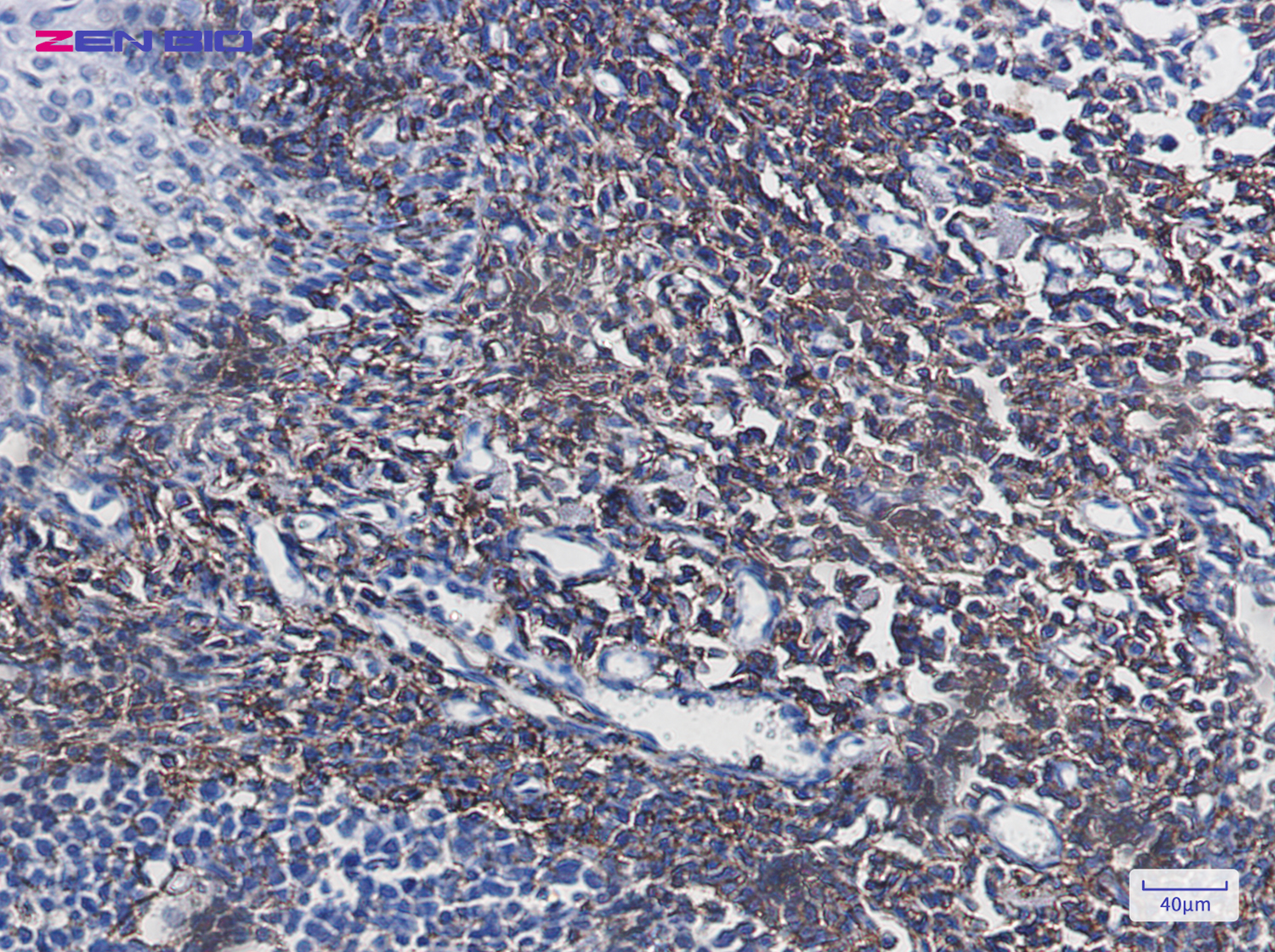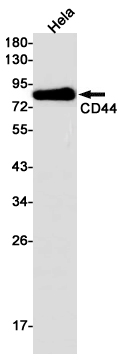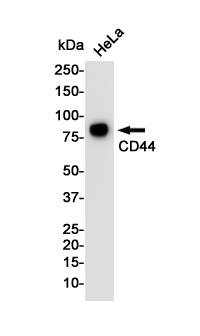-
Product Name
Anti-CD44 Rabbit antibody
- Documents
-
Description
CD44 Rabbit polyclonal antibody
-
Tested applications
WB, IHC-P, FC
-
Species reactivity
Human
-
Alternative names
IN; LHR; MC56; MDU2; MDU3; MIC4; Pgp1; CDW44; CSPG8; HCELL; HUTCH-I; ECMR-III antibody
-
Isotype
Rabbit IgG
-
Preparation
Antigen: A synthetic peptide of human CD44
-
Clonality
Polyclonal
-
Formulation
Supplied in 50nM Tris-Glycine(pH 7.4), 0.15M Nacl, 40%Glycerol, 0.01% sodium azide and 0.05% BSA.
-
Storage instructions
Store at -20°C. Stable for 12 months from date of receipt.
-
Applications
WB: 1/1000
IHC: 1/20
FC: 1/20
-
Validations

Immunohistochemistry of CD44 in paraffin-embedded Human tonsil using CD44 Rabbit pAb at dilution 1/20

Western blot detection of CD44 in Hela cell lysates using CD44 Rabbit pAb(1:1000 diluted).Predicted band size:82kDa.Observed band size:82kDa.

Western blot detection of CD44 in Hela cell lysates using CD44 Rabbit pAb(1:1000 diluted).Predicted band size:82KDa.Observed band size:82KDa.
-
Background
Swiss-Prot Acc.P16070.Receptor for hyaluronic acid (HA). Mediates cell-cell and cell-matrix interactions through its affinity for HA, and possibly also through its affinity for other ligands such as osteopontin, collagens, and matrix metalloproteinases (MMPs). Adhesion with HA plays an important role in cell migration, tumor growth and progression. In cancer cells, may play an important role in invadopodia formation. Also involved in lymphocyte activation, recirculation and homing, and in hematopoiesis. Altered expression or dysfunction causes numerous pathogenic phenotypes. Great protein heterogeneity due to numerous alternative splicing and post-translational modification events. Receptor for LGALS9; the interaction enhances binding of SMAD3 to the FOXP3 promoter, leading to up-regulation of FOXP3 expression and increased induced regulatory T (iTreg) cell stability and suppressive function .
Related Products / Services
Please note: All products are "FOR RESEARCH USE ONLY AND ARE NOT INTENDED FOR DIAGNOSTIC OR THERAPEUTIC USE"
